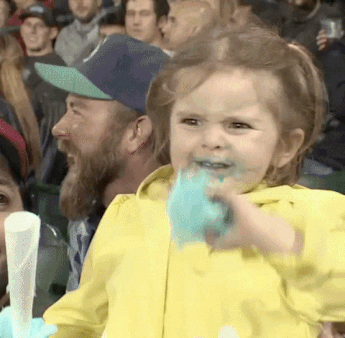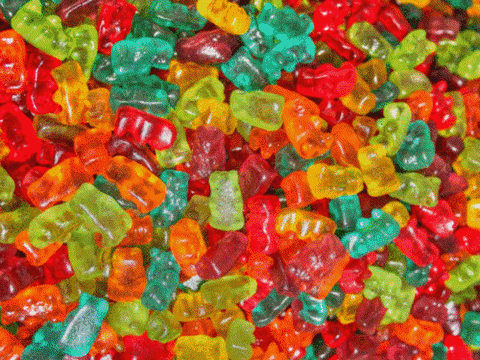Beginning Reading (BR) Design: “Eek, Some Sweets!!”
A Phonics Lesson Teaching ee = /E/
Rationale: This lesson teaches children about the long vowel correspondence ee= /E/. In order to be able to read, children must learn to recognize the spellings that map word pronunciations. In this lesson, children will learn to recognize, spell, and read words containing the spelling ee. They will learn a meaningful representation (picture of a little girl saying ‘eek’ when she got some sweets), they will spell and read words containing this spelling in a Letterbox lesson, and read a decodable book that focuses on the correspondence ee = /E/.
Materials:
-
Graphic image of a little girl who is excited about some sweets!!! (Eek, some sweets!!)
-
Cover-up critter
-
Whiteboard or smartboard
-
Elkonin boxes for modeling and individual Elkonin boxes for each student
-
Letter manipulatives for each child and magnetic or smartboard
-
Letters for teacher: b, e, e, d, p, s, c, h, c, k, g, r, n, t, t
-
List of spelling words on poster or whiteboard to read: bee, deep, seed, check, green, street
-
Decodable text: “The Green Feast” from Fun and Games with Lad and Slim by Bruce and Geri Murray.
-
Worksheet: Long E Words: Matching EE Words and Pictures Worksheet (URL below)
Procedures:
1. Say: We need to learn the code that tells us how to pronounce words in order to become expert readers. We have already learned to read short vowel words with e, like hen, and today we are going to learn about long E and the double e signal that is used to make E say its name, /E/. When I say /E/ I think of a little girl saying “Eek” because she was surprised with some yummy sweets. [show graphic image].
2. Say: Before we learn about the spelling of /E/, we need to listen for it in some words. When I listen for /E/ in words, I hear e says its name /E/ and I show it with my teeth like this and my mouth smiles [Show teeth and make vocal gesture for /E/.] I’ll show you first: feet. I heard e say its name, and I felt my mouth open and show my teeth, like a smile [point to teeth]. There is a long E in the word seed. Now I’m going to see if it’s in the word gem. Hmm, I didn’t hear e say its name and my mouth did not open and show my teeth or smile. Now you try. If you hear /E/ say, “Eek, some sweets!” If you don’t hear /E/ say “That’s not it”. Is it in tree, mop, sleet, spend, creep, shift, steed? [Have children point to their teeth when they feel /E/ say its name]
3. Say: Now let’s look at the spelling of /E/ that we’ll learn today. One way to spell /E/ is with the two letter e’s right next to each other [Write ee on the board]. There may be consonants before or after the two e’s in a word. What if I want to spell the word creek? “Claire and Carson are going to go fishing down at the creek.” A creek is a stream that is smaller than a river. To spell creek in letterboxes, first I need to know how many phonemes I have in the word, so I stretch it out and count: /c/ /r/ /E/ /k/. I need four boxes. I heard that /E/ just before the /k/ so I’m going to put two e’s in the 3rd box. The word starts with /c/, that’s easy; I need a c. Now it gets a little tricky, so I’m going to say it slowly, /c/ /r/ /E/ /k/. I think I heard a growling /r/ so I’ll put an r right after the c. I have one empty box now! [Point to letters in boxes when stretching out the word: /c/ /r/ /E/ /k/] I think I heard a /k/ so I need a ‘k’. The missing one is /k/! Now we have /c/ /r/ /E/ /k/, creek! The missing one is /k/ = k.
c r ee k
4. Say: Alright now I’m going to have you spell some words in letterboxes. You’ll start out with two boxes for the word bee. “The bee is going from flower to flower.” What should go in the first box? [Listens and responds to children’s answers]. What goes in the second box? [Listens and responds to children’s answers] I’m going to walk around the room and check your spelling. [Observe progress.] For the next word, you will need three letterboxes. Listen for the beginning sound that goes in the first box. Then, listen for /E/ and make sure to put two e’s in the same box! Here’s the word: deep, “I want to go swimming, but I think the water is too deep.” [Allow children to spell words.] Time to check your work. Watch how I spell it in my letterboxes on the board: d–e-e-p and see if you’ve spelled it the same way. Try another with three boxes: seed; “I didn’t know an apple tree grows from a seed!”[Allow a volunteer to come to the front board and spell it in the letterbox for children to check their work. Repeat this step for each new word.] Next word. Listen to see if this word has /E/ in it before you spell it: check; “Will you check and see if the laundry is done?” Did you need the double e? Why not? Right, because we don’t hear e say its name. We spell it with our short vowel e. [Volunteer spells it on the front board.] Did you remember to spell /k/ with a ck? You will need four boxes for the next word: green; “The grass looks very green today!” One more and then we are done with spelling! This time you need five boxes: street; “Make sure to look both ways before you cross the street.” Remember to stretch it out to get this tough word.
5. Say: Now I am going to let you read the words you’ve spelled, but first I’ll show you how I
would read a tough word. [Display poster with street written on the top and model reading the word.] First, I see our double e on the end; that’s my signal that the vowel will say its name. I’m going to use a cover-up to get the first part. [Uncover and blend sequentially before the vowel, then blend with the vowel.] /s/ /t/ = /st/ + /r/ = /str/. Now I’m going to blend that with /E/ = /strE/. Now all I need is the end, /t/ = /strEt/. Street; that’s it. Now it’s your turn, let’s all say it together. [Have all the children read words in unison. Then, call on individuals to read one word on the list until everyone has had a turn.]
6. Say: You all have done an awesome job with reading words with our new spelling for /E/: ee. Alright, now we are going to read “The Green Feast” from Fun and Games with Lad and Slim by Bruce and Geri Murray. Booktalk: “Nate is at dinner with his friends Jan and Tim, but he really does not want to eat any green veggies! If Nate does not eat his veggies, then he won’t get any dessert! Oh no! Will Nate eat his veggies and end up getting dessert? Let’s read to find out!” Let’s pair up and take turns reading “The Green Feast” to find out if Nate ever eats his green veggies and gets his dessert. [Each child will partner read alternate pages as the teacher walks around the room monitoring progress. After individual paired reading, the class rereads “The Green Feast” aloud together and pauses between page turns to discuss the plot.]
7. Say: That was a great story!! Did Nate end up eating his veggies? Right, yes he did! Who tricked him into eating the cake made out of green veggies? Right, Jan! What a sneaky girl! Nate had his veggies and dessert all in one bite! Before we finish up with our lesson about one way to spell /E/ = ee, I want everyone to complete a worksheet on what we have learned today! On this worksheet, we have some pictures and words that need to be matched up. Go back over your answers to see if they all make sense. [Collect worksheets to evaluate individual child progress.] (Link to the worksheet is in resources)
Resources:
Carson Williams, Eek, a Bee! https://carcarwilly.wixsite.com/mysite/br-design
Maggie Glidewell, Eek! A Mouse https://maggieg221.wixsite.com/my-site-1/copy-of-home
Murray, B. & Murray, Gerri. Fun and Games with Lad and Slim-:A green Feast. 2019
https://www.amazon.com/Bruce-A.-Murray/e/B07VH5LHWG?ref_=pe_1724030_132998060
Pictures/GIFS: https://giphy.com/gifs/candy-gummy-sucker-68VbOiJLDUkYo & https://tenor.com/view/sugar-rush-kid-baseball-cuteness-over-load-gif-13429104
Assessment Worksheet: https://www.teacherspayteachers.com/Product/Long-E-Words-Matching-EE-Words-and-Pictures-Worksheet-7245396?st=6fe2fc6dbf4f68545b0ba08c39edc21c
Reading Genie Awakenings Index Link: https://wp.auburn.edu/rdggenie/home/classroom/awakenings/


